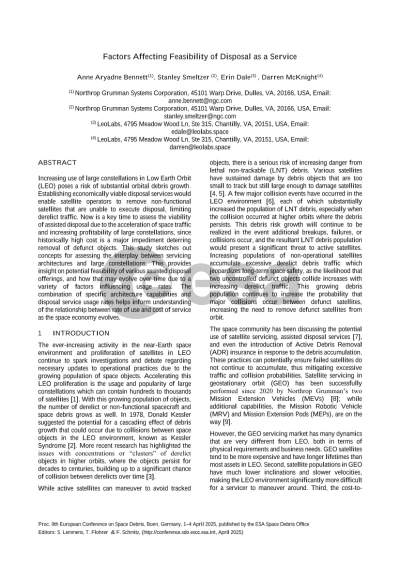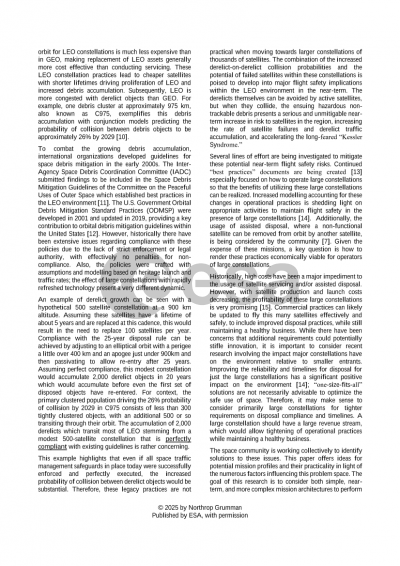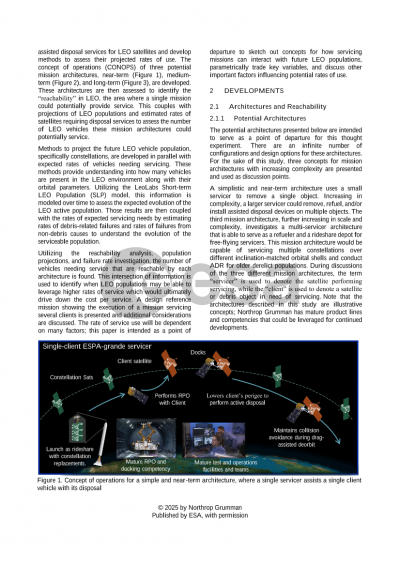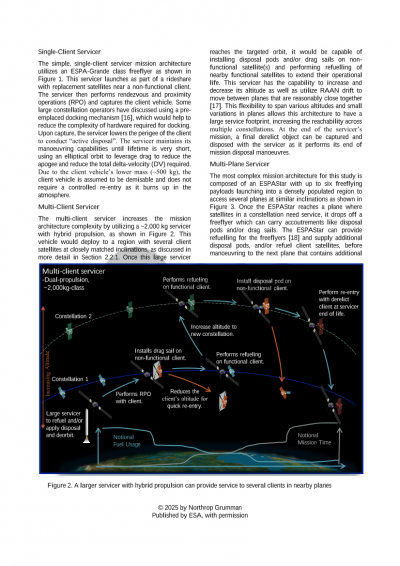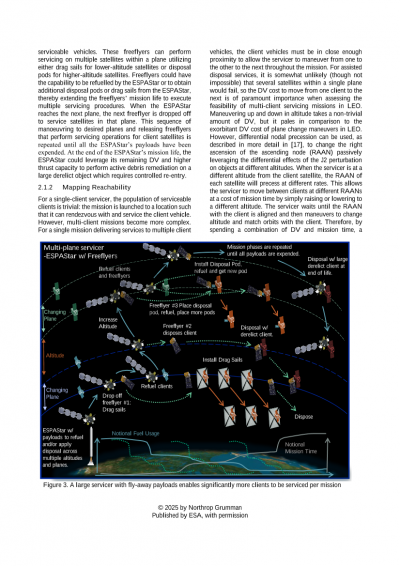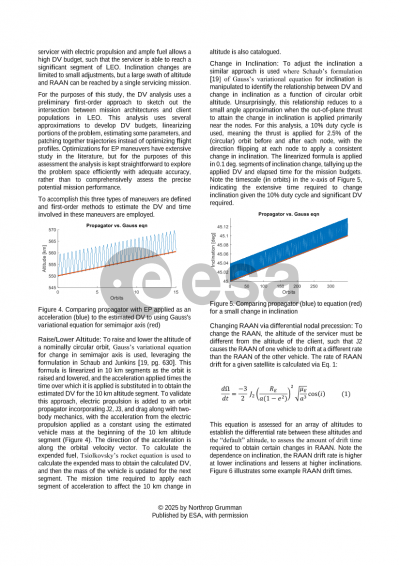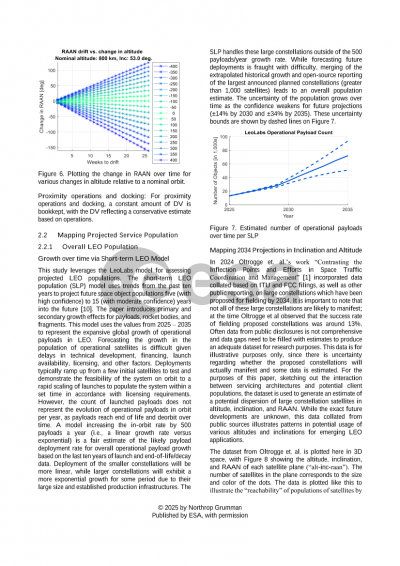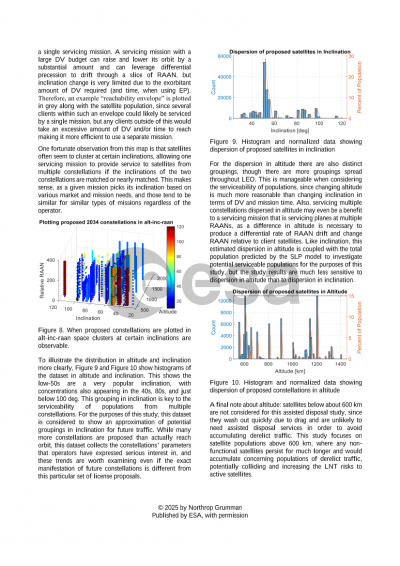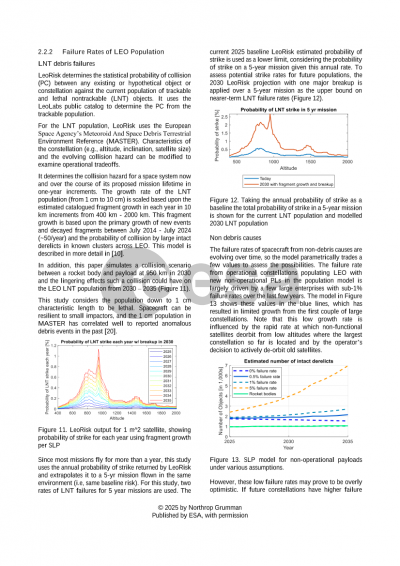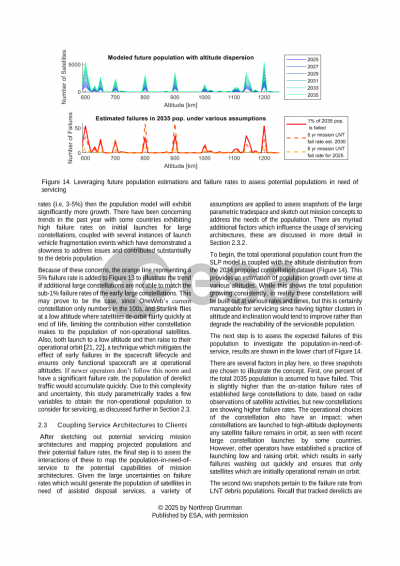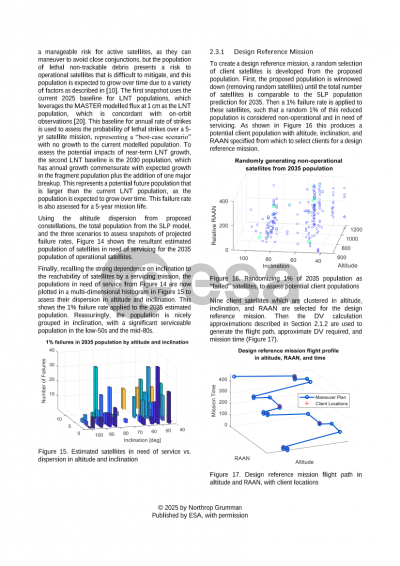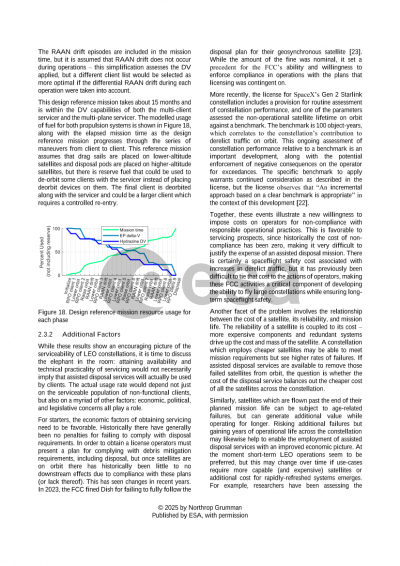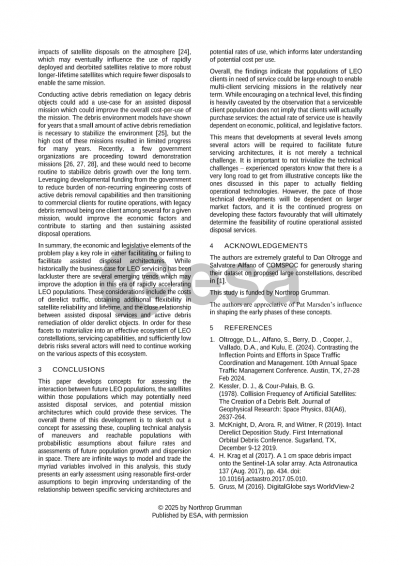Document details

Abstract
The growing application of large satellite constellations in the LEO environment poses a risk of substantial orbital debris growth. This debris growth risk would be realized in the event of breakups, failures, or collisions, and the resultant hazardous non-trackable debris population would present a significant threat to active satellites. Collisions between derelict satellites will be increasingly likely if failed satellites from these large constellations are left on orbit. Increasing populations of non-operational satellites accumulate excessive derelict debris traffic, jeopardizing sustainability. Establishing economically viable disposal services would enable satellite operators to remove non-functional satellites that are unable to execute a timely disposal. A major impediment deterring operators from utilizing “Disposal as a Service” concepts is high cost. As large constellations continue to grow and realize the currently projected large profit margins, it is a key time to assess the viability for Disposal as a Service. The space community has been discussing the potential use of assisted disposal services and even the introduction of Active Debris Removal (ADR) insurance to ensure that failed satellites do not accumulate, thus producing excessive traffic, leading to collisions.
The goal of this research is to consider both simple, near-term and more complex Disposal as a Service mission architectures and develop methods to assess their projected rates of use. The combination of specific architecture capabilities and rate of disposal service use will inform understanding of the relationship between rate of use and cost of use – as rate of use increases, cost per use should decrease. Three primary mission architectures are assessed in this analysis. A simplistic and near-term architecture uses a small servicer to remove a single object. Increasing in complexity, a larger servicer could remove, refuel, and/or install assisted disposal devices on multiple objects. The third mission architecture, increasing in scale and complexity, investigates a multi-servicer architecture that is able to serve as a refueling capability and a rideshare depot for free-flying servicers. This mission architecture would have the capability to service multiple constellations over different inclination-matched orbital shells, and also conduct ADR for derelict populations.
Methods will be developed to assess the rates of use for each mission architecture via a series of sensitivity studies to characterize rate of disposal service usage under various assumptions. Potential factors that affect usage rate include launch and replacement rate, worsening debris environment resulting in more satellite losses, changes in satellite reliability (often commensurate with cost of satellite), changes in satellite lifetime which effect their disposal reliability (extended operations increase failure rate), changes in policy, and changes in re-entry risk criteria for debris removal operations. Investigating the probable deployment rates and failure rates from large satellite constellations provides insight into the number of satellites that would need servicing over time. This study is designed to sketch out a concept for assessing the interplay between servicing architectures and large constellations, to provide insight on the potential feasibility of various Disposal-as-a-Service offerings, and how that may evolve over time due to a variety of factors influencing usage and cost.
Preview
